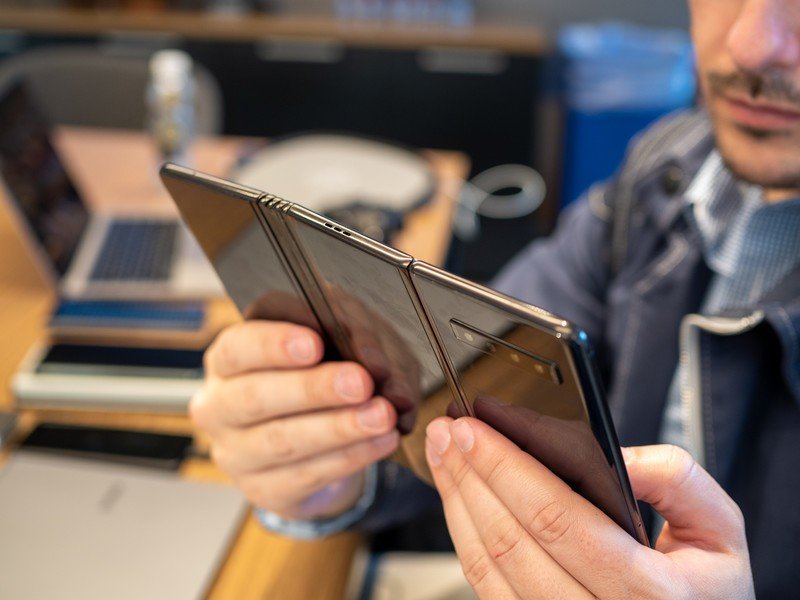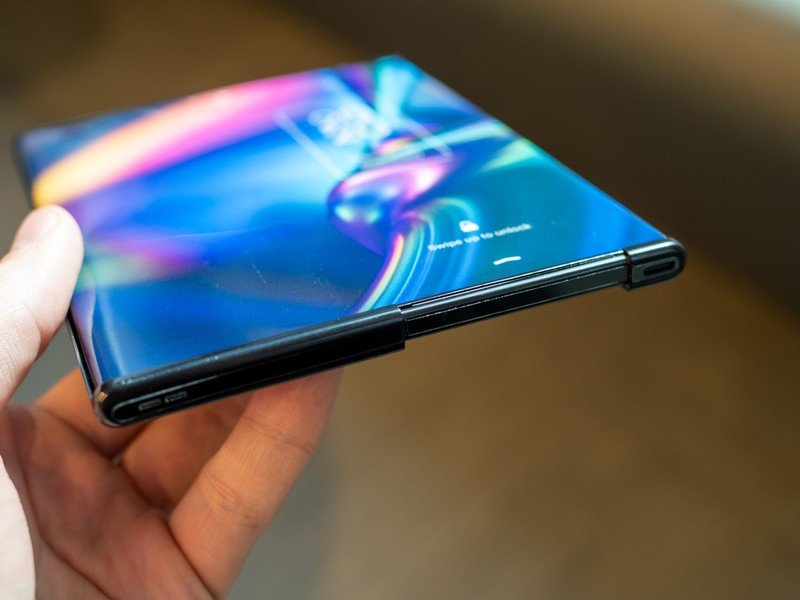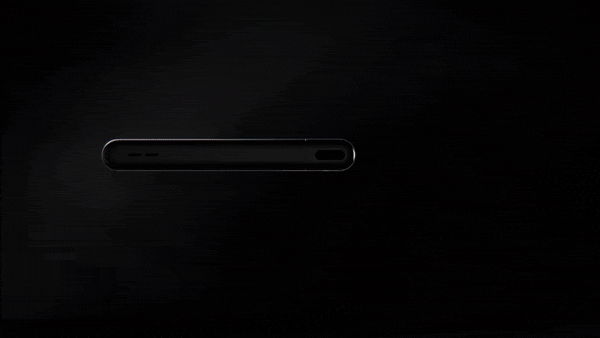TCL shows off crazy foldable prototypes, including a rollable extending screen and bifold tablet

TCL is barely a name in the smartphone game, though it has big aspirations of making itself as well-known in that market as it already is in TVs. One side of that process is getting budget-focused phones, like the TCL 10 series, out into the market. The other is to show off what it's capable of in the high-end space, and there's no better way to show what you're capable of in 2020 than to start unveiling foldables.
We certainly haven't reached a consensus on what foldable form factor is "best," and chances are we'll end up settling on several different uses for foldable screens. TCL is showing off three concepts it's been working on, each with a different screen size, screen fold mechanism and potential use case. To be clear, these aren't actual products; they're just concept devices, but they're the kind of things most companies keep under wraps deep in the engineering labs, and we're getting to actually see and touch them for ourselves. That's really cool.
The bifold tablet concept



Source: Andrew Martonik / Android Central
What's better than a phone that folds in half? How about a phone that folds twice. TCL is calling this a "tri-fold" but I don't really understand the nomenclature considering it only folds in two places. (We don't call the Galaxy Fold a bi-fold, right?) So I'll be calling it a bifold. Look, it folds, and then folds once more.
This is like a select-a-size tablet — open up as much as you need for the task at hand.
The concept here is that this is a tablet that is equally divided into three panels, and that enables it to be used in three distinct modes: fully open, two-thirds open, and then "closed" with one-third of the screen shown like a phone. When in its folded-up phone mode, the screen measures in at 6.6 inches diagonally. When opened, it's a tablet with a 10-inch diagonal screen.
TCL's calling this a tablet for good reason, because it's absurdly thick and heavy when folded up. The folded mode is primarily for the convenience of being able to fit it places where a full-sized tablet couldn't. But of course it does work in this phone mode, as well as the two-thirds smaller tablet mode, and that's the genius of it — as you collapse each section, that portion of the screen turns off so you're only interacting with what's facing you.









There's way more to making a dual-folding device work than you'd initially think.
It's unlikely that TCL would actually sell something with this design, but it lets the company overcome the engineering challenges of having both an inward-folding and outward-folding hinge in the same device. It's rather complex to have both hinge types, and opposing pressures put on the same screen at the same time. Not to mention what it means for dividing up the internal components and batteries.
Be an expert in 5 minutes
Get the latest news from Android Central, your trusted companion in the world of Android
There are considerable hurdles to overcome with this form factor in general, like managing flex in the screen and tightness of two hinges to keep the whole thing rigid when fully extended. But if it were to be executed on properly, I could easily see this sort of design working. Android tablets may be a lost cause today, but this sort of bifold layout could rejuvenate the category.
The rollable extending screen concept


Source: Andrew Martonik / Android Central
Here's where things get really crazy: a phone that extends out of one side with a rollable display. Yes this is the concept that was leaked out a couple weeks back, and it is indeed something TCL is actively working on.
If TCL can figure out the mechanics of this, it's an incredible design.
At the start, it looks (mostly) like a regular smartphone, with a symmetrical design and curved screen edges. But then, well, the right side of the phone slides out to make the entire device about twice as wide. Think of the mechanism as a tray on a set of rails sliding out from the side of the main phone chassis. The screen is anchored to the sliding side of the phone, and slides out from inside the device via a slot along the side. The screen is effectively set in tracks underneath the raised bezels on the top and bottom, and in its own little tray inside the phone that folds almost entirely back on itself.
Compared to the bifold tablet, this is in some ways way more practical — you're starting from a regular phone form factor, so when it's closed up there are no inherent compromises. The phone's only 9 mm thick, and has a 6.75-inch screen — and when extended, is a comfortable 7.8 inches with an aspect ratio of something like 4:3. And because the screen is sliding along a defined curve and never asked to bend at a tight angle, the chances of creases or fold-related stress damage are minimized.






But in most other ways it's incredibly complicated and difficult to do right. The whole screen mechanism takes up a ton of room inside the phone, making it tough to fit in all of the essentials. The way it curves and slides currently requires a very flexible plastic screen covering. And TCL doesn't yet have a great explanation of its solution to the issue of actually powering the screen movement, though it's saying from the start this will be a powered slider.
Rollable, or trollable? This is an amazing idea with serious roadblocks ahead of it.
I'm calling this design "the rollable" but it really should be "the trollable" — what we were able to see is a completely non-functional dummy unit without a working display. That means we were missing out on an important aspect of this whole design: how the screen will extend. TCL says the only way it sees this working is if the screen extends and retracts automatically with the push of a button, because if it was manual, as we saw with these dummy units, there's a much higher chance of damaging the screen.

We were shown a video of a unit with a functional screen and powered sliding mechanism, plus another concept rendering showing how the entire mechanism will work. It looks really cool, and we haven't seen anything even close to this before, which is super exciting. But also, this is clearly very far away from becoming a reality — so it's hard to get excited when this could be years away, if it makes it to market at all.
The basic single fold phone-tablet concept






This is clearly the most finished foldable form factor that TCL has in the works, and it makes sense as to why: as far as foldables go, this is a pretty basic design like the Galaxy Fold.
It may not be as striking, but this is a practical foldable we could actually see come to market.
The hinge and screen mechanism actually work similarly to the Motorola RAZR, with a hinge that collapses in a way that makes room for the screen to fold on itself with a wider curve radius and an air gap between the sides of the panel to prevent creasing. The screen also slides underneath the bezels to facilitate this crease-saving curve, though unlike the RAZR this prototype lets the screen slide on both ends with the only anchor point being the middle where the hinge is.
I could see TCL actually releasing something like this, because it's the only sane concept of the bunch. The others are really exciting from a technology standpoint, but if we're going to look through the lens of what could actually become a consumer product, it's most likely to look something like this. I'd love to see something that incorporates the ideas of the bifold and rollable concepts, but that's more science fiction than a peek into our near future. Even still, we love to see science fiction now and then.
Andrew was an Executive Editor, U.S. at Android Central between 2012 and 2020.

